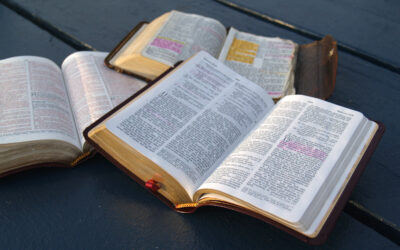The term “Catholic” can be viewed as a general descriptor of all the faiths that adhere to the doctrine and traditions of the catholic church. As such, it is often used to represent an array of Catholics including those that belong to the Roman rite (mostly the Western world). However, there are lots of Catholics who do not identify as Roman Catholics because they do not adhere to the Roman rite. For instance, most Catholics from the East follow other rites like Ukrainian, Maronite, and Chaldean rites.
So how can one differentiate Roman Catholics from Catholics?
The main difference between the two is that Roman Catholics follow the Roman rite while Catholics do not. Within the vast tapestry of Catholicism, there exists a rich diversity of rites, each carrying its own unique liturgical practices, customs, and theological nuances. But apart from the rite, there are other notable differences in liturgy, sacraments, church leadership, and prayer and devotion. Let’s take a closer look at these differences.
Liturgical Rites
As we have already established, the Roman Catholic Church follows the Roman rite which is also the most prevalent catholic rite on the globe. The Roman rite was originally for Latin churches but it has since been translated into other languages. It defines the liturgy of the hours as well as the mode of delivering the sacraments and blessings. The Roman rite is made up of Introductory Rites, Litrught of the Eucharist, Liturgy of the word, as well as concluding rites. The Catholic church mostly refers to Eastern Catholic Churches and as such, their liturgical rules originate from Eastern Christianity.
There are at least 23 Eastern Catholic Churches and each of these has an archbishop or patriarch as well as their distinct legal canon. Each of the individual churches has a right to institute its liturgical books, canonical norms, canonical hours, and rituals around the Eucharist and other sacraments. The liturgical traditions in the Eastern Catholic Churches mostly comprise the Armenian Rite, the Alexandrian Rite, the East Syriac Rite, and the Byzantine Rite. Of these rites, the Byzantine rite is the commonest. It’s a highly stylized form of the Antiochian rite which was designed for the imperial church based in Constantinople (Byzantium).
Sacraments
Even though there are several Catholic rites, they all share the same seven sacraments
(baptism, confirmation, the Eucharist, confession, anointing of the sick, holy orders, and marriage). The difference, however, is in how these sacraments are observed by the Roman Catholic Church vis-à-vis the catholic church.
Catholics emphasize the unity and interconnectedness of the sacraments of baptism, confirmation, and the Eucharist. As such, these three sacraments are typically administered together in a single ceremony. On the flip side, the Roman Catholic Church administers the seven sacraments separately because each of the sacraments signifies an individual milestone.
Prayer and Devotion
Prayer and Devotion is another unifying factor across the different catholic rites. However, the specific prayers are different. For example, Catholics often make the Jesus Prayer which is a contemplative invocation of the name of Jesus Christ. On the other hand, Roman Catholics place a lot of premium on the Rosary which is a meditative prayer that is centered on the life of Jesus coupled with the intercession of the Virgin Mary. Another interesting difference in prayer and devotion between the two rites is that Catholics often use icons and various sacred images as aids in devotion to help forge a tangible connection with divinity.
Church Hierarchy and celibacy
All Catholic rites remain in communion with the Pope which means the Pope is still the visible head of all rites. However, the Roman Catholic and Catholics have their unique hierarchical structures of Bishops, priests, and deacons. One of the interesting differences is that the Roman Catholic doctrine emphasizes celibacy for all clergy while some Catholic rites allow for the ordination of married men as priests.
Roman Catholics teach that St. Peter was the first pope and that all the subsequent popes have the delegated authority of Christ that was handed down through Peter. In other words, the pope is the successor to Peter, and as such, they have divine authority over the church. Roman Catholics, therefore, believe that the Pope is infallible especially when addressing issues of “ex cathedra”
On the flip side, Catholics do not agree that the pope has absolute authority. Even though they recognize the Pope as the Bishop of Rome and respect the historical significance, they do not believe that his teachings are inherently infallible or biding. Emphasis is instead placed on the collective authority of Bishops. For Catholics, the conciliar is pivotal in the decision-making process.
Fasting and Feasting
Feasting and fasting are also different across the different Catholic rites. For instance, the Byzantine rite has an extensive fasting calendar that seeks to establish self-discipline and asceticism. Additionally, the Feast of the Dormition of the Mother of God is also observed by the Byzantine rite as opposed to the Assumption. This is a further testament of the distinct liturgical traditions around feasts in the Catholic rites.
The canon
In Roman Catholic doctrine, Bishops have the authority to apply canonical law. Canonical law refers to the regulations that have been set by the church. Bishops are seen as successors of the apostles and are therefore allowed to interpret as well as implement the canon. Their shepherding roles include exercising authority to ensure the canons are upheld by the faithful.
In contrast, Catholics do not view the canons as binding laws. Even though they recognize the canon, the Bishops are not granted individual authority to enforce or interpret them. The canons are viewed as guidelines and recommendations and not laws. They contend that their obedience to the faith is not based on canonical laws but on their personal relationship with God.
Conclusion
The Catholic faith is a unique tapestry that encompasses several liturgical rites. As we have already established, each of these rites has its distinct beliefs and practices but they can be broadly categorized into two: Roman Catholics and Catholics. However, the two also have lots in common including the recognition of the pope as the overall leader. One may argue that the differences between the two are mostly informed by the cultural differences in different regions but the faith largely remains the same.





